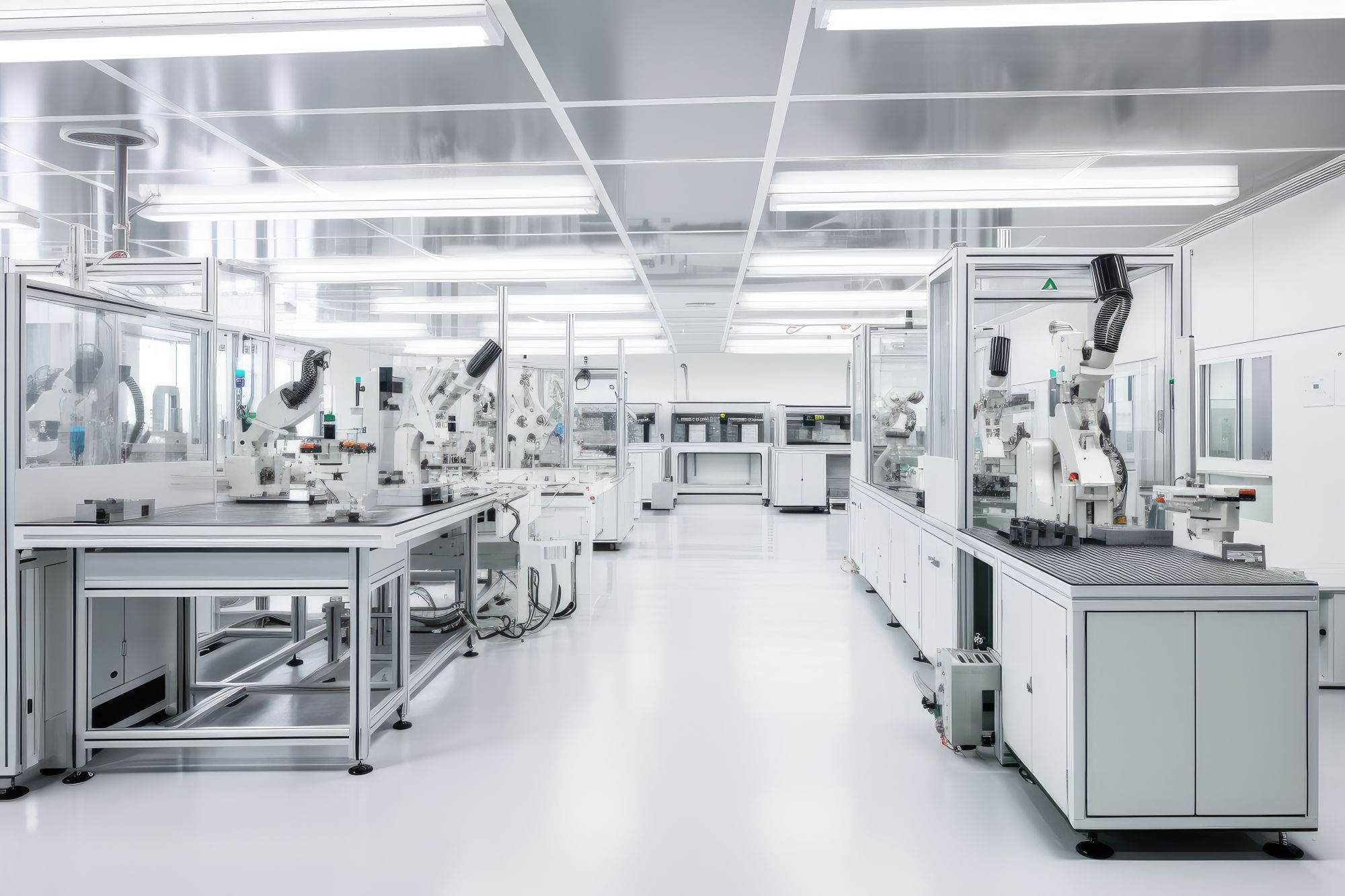Cleanrooms require meticulous control of air quality to maintain a sterile and dust-free environment. The initial cleanroom design and installation is the first thing, but the air quality is also dependent on proper daily operational practice and good maintenance.
Just how clean is clean depends on the ISO class or GMP grade of the cleanroom. There are also areas that aren’t formal cleanrooms but still benefit from some of the tips given here. Such ‘controlled environments’ are found in autobody spray shops, glazing manufacturers, laboratories, food production lines, advanced manufacturing companies and electronics manufacturers.
What Are My Options For Improving Air Quality In Cleanrooms?
There are many ways to improve air quality in your existing cleanroom, without the cost, delay, and disturbance of a radical refit. In this article, we explore efficient ways to improve air cleanliness whilst reducing waste.
However well-sealed and air-filtered your cleanroom is, reducing incoming contamination and the potential for airborne particulate matter generation is the number one priority of cleanroom management.
- All surfaces (walls, floor, ceiling, and worktops) should be of non-fibrous, smooth and easily cleaned material. Where replacing a subpar surface isn’t feasible, cleanroom floor matting and bench surface protectors can be overlaid. Minimise hard-to-clean gaps, cracks and ledges. A one-piece floor covering is better for cleanliness, although you can buy jigsaw-type flooring for cleanrooms. Full-size bench surface protectors and made-to-measure self-healing cutting mats offer good protection against grooving and are easy to clean.
- Restrict personnel access by only allowing cleanroom-trained staff to enter the clean zone. Use a standard operating procedure in line with your cleanroom’s classification, or QC level.
- The gowning and de-gowning room should be kept as clean and sealed off as possible. Likewise, the unboxing and packaging area. The best practice is to have a one-way system, with stepped air purity levels from room to room. Use a HEPA-filtered vacuum cleaner to de-dust products, clothing and items before they go through to the next zone. The use of expendable sticky floor mats helps take residual dirt off footwear soles and trolley wheels. However, it’s best to avoid having to use disposable products through better system process design.
- Every time a door or hatch is opened, airborne dust and surface contamination is likely to be introduced. Plan ahead and coordinate deliveries, rest breaks, and product transfer to minimise the time that the door is opened. Maintaining a positive air pressure by pumping in filtered air helps prevent outside air from being drawn in. Create an airlock by only allowing one door within linked rooms to be open at any one time.
- Ban the use of dust-creating materials such as fibreboard, paper and card. For notetaking, Purus and others sell special laboratory paper notebooks that are coated to avoid fibre shedding. The other option of course is to use a PC or tablet that stays in the room, alongside cleanable and sealed keyboards. Lab-friendly and medical-grade mouse controllers are also available. If your hard workbench needs a softer surface or you are using cutting tools, use a robust specially-made cutting mat that doesn’t break down or produce dust.
- Regularly check the air-filtration system, replacing or cleaning the filters when needed. Whether passive air is drawn in from outside the cleanroom or comes through the building’s HVAC/aircon system it will need secondary filtering to remove dust and other contaminants. How the vents distribute the airflow can have a big impact on dust accumulation so check these for blockage and angle.
- High-efficiency particulate air filters can clog up quickly in areas with larger particles or greater dust concentrations, so always seek to minimise dust entering (and being produced) the workspace. Check and replace filters according to the manufacturer’s instructions.
- Whilst not meant as a replacement for main inlet air filtration, auxiliary air purifiers are available. They are designed to give the air quality an extra ‘polishing’ by tidying up residual particles that escape your first line of defence. Choose one that has a HEPA filter tested to remove 99.97% of particulates at 0.3 microns in size, or better.
- Don clean, lint-free overalls, gloves, face mask, and hair caps before entering the cleanroom (ideally within a dedicated and attached changing room). We humans create an average of 10 grams of fine dust per week!
Whichever your level of air purity target, this article has hopefully given you some tips for improving your cleanroom air quality.
Rhino specialises in heavy-duty workbenches and high-performance workbench cutting mats for R&D labs, clean manufacturing, and advanced tech production areas. If you need an easy-to-clean, smooth surface to work on, ask about our range of bench-top cutting mats and we’ll help you find the perfect fit, hardness and thickness to suit your task.


